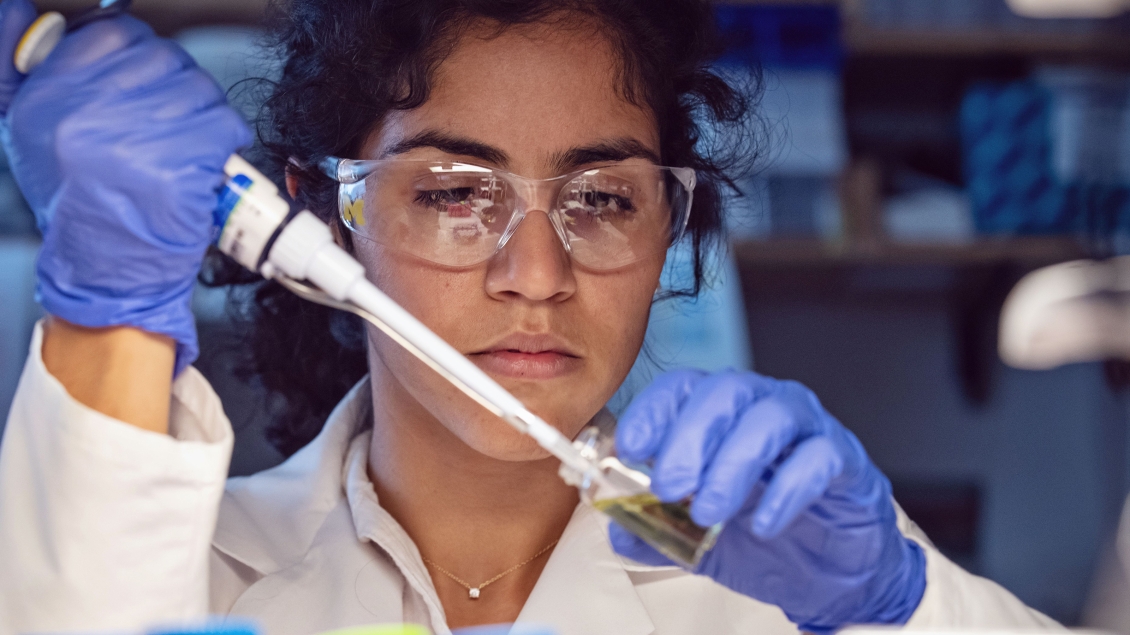
Winning Combination
The U-M Medical Scientist Training Program brings together the innovative excellence of our medical school and a diverse selection of top-ranked graduate programs under one umbrella.
Established in 1979, the Michigan MSTP is tailored to meet the educational needs, unique talents and dedication of students who seek a combined MD-PhD degree with the goal of establishing a career in academic medicine.
Our graduates represent the best of what the University of Michigan contributes to the advancement of science and medicine.
Dual Degree, Singular Purpose
When you join the Michigan MSTP, you are welcomed into an engaging and supportive environment where you can reach your maximum potential. That’s because every aspect of our program has been designed around this one goal: to develop the best academic medicine researchers.
For us, this takes many forms: our flexible curriculum, variety of PhD fields, formal and informal support networks, and outstanding clinical and scientific training.
Pioneering Legacy
Established in 1850 as the first professional school at the University of Michigan, our medical school has made history with other notable firsts: the first medical school in the United States to own and operate its own hospital, one of the first major medical schools to admit women, and the first major medical school to teach science-based medicine. In addition, Michigan created and introduced the modern medical curriculum and developed the first clinical clerkships.
Building on that tradition of innovation, the University of Michigan Medical Scientist Training Program was launched in 1979 to facilitate the combined MD-PhD degree education of outstanding, dedicated students.
Facts & Figures
The University of Michigan Medical School builds on its long history of academic excellence, research breakthroughs and major funding support through the efforts of our students, faculty and staff. They come to Michigan for many good reasons—the top one is the opportunity to improve health care for everyone.

- Literature-based biochemistry course in M1 year
- Fellow-to-fellow mentoring program for the clinical years
- Monthly MSTP events
- Muddy Phuddy Club (physician-scientist career development)
- Annual scientific and social retreat
- Clinical preceptorships
- Fellow-run translation seminars/journal club
Anthropology
Bioinformatics
Biological Chemistry
Biology
Biomedical Engineering
Biophysics
Biostatistics
Cancer Biology
Cell & Developmental Chemical Biology
Economics
Environmental Health Sciences
Epidemiology
Health Service Organization & Policy
History
Human Genetics
Immunology
Industrial & Operations Engineering
Microbiology & Immunology
Organization & Policy
Pharmacology
Philosophy
Psychology
Ann Arbor is a culturally diverse and eclectic city, so it's easy to keep up with your hobbies or start new ones. Here are the top things we like to do when not in the class, lab or clinic:
1. Biking
2. Cooking/baking
3. Reading
4. Running
5. Backpacking/camping
6. Intramural sports like tennis, baseball and basketball
7. Creative writing
8. Cross-country skiing
9. Music
10. Photography